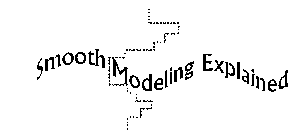Smooth Modeling Explained |
Since Autumn 1992, Interpex has been supporting smooth model inversions in its layered model inversion software for electrical and electromagnetic methods, including EMIXMT, RESIXIP, RESIX Plus and TEMIX series packages. Smooth modeling is carried out automatically with a minimum of user input and allows the user to present the data as resistivity vs. depth without having to spend time or make decisions interpreting the data. Smooth modeling is used in practice as an alternative presentation of the data or as a guide to estimating the starting layered model for inversion. It has all the equivalence problems which are associated with layered models, but does not clearly show that this is so. Both the Occam's and the Ridge regression methods try to minimize the fitting error between the data and calculated curves. To do this, the process must be stabilized so that the inversion converges to a small fitting error, rather than diverges to a very large error. The difference between them is that the Occam's method minimizes the roughness of the change applied in each iteration, while the Ridge Regression minimizes the magnitude of the change. In practice, Ridge regression might give a smaller fitting error but will allow the model to oscillate more. In a presentation using many soundings along a profile or in a map form, the difference between adjacent soundings is much more important than the exact nature of the model for each sounding. For generating smooth models, you should decide on the shallowest and the deepest penetrations which are available in the data and whether to use William of Occam's principle ("it is vain to do with more what can be done with fewer") or the Ridge Regression fitting. For resistivity and IP soundings, use an estimate such as the total electrode spread divided by 4 to estimate the min and max depths. For electromagnetic methods, these can be estimated by doing some layered modeling on the data first or by using the skin or diffusion depth formulas. If you go a little shallower and a little deeper than required, and use as many layers as possible, keeping the same number of layers and the same depths for each curve in a single study, you will at least be able to compare curves in a meaningful way. |
